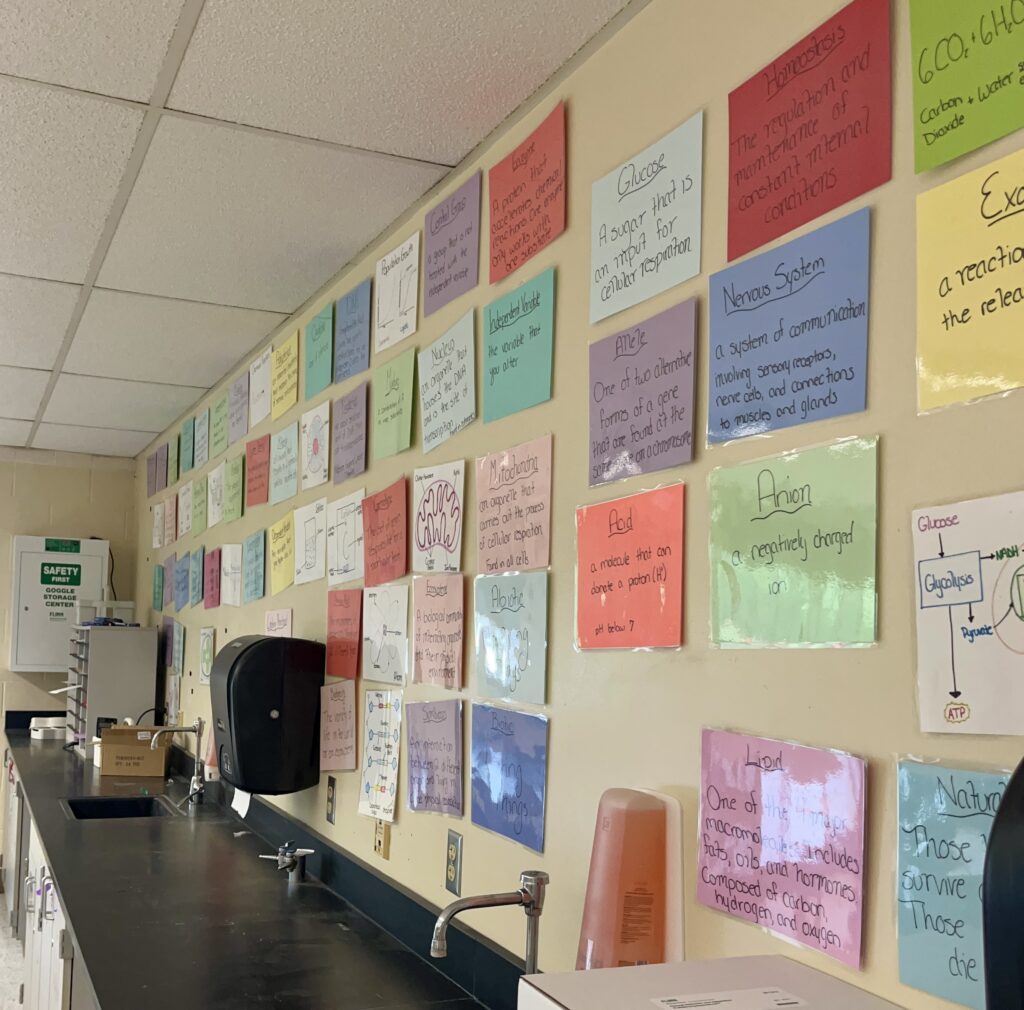Let’s be real- every student know that memorizing vocabulary can be tough!
it only gets harder when the words are describing microscopic or even “invisible” processes. But here’s the thing: without that vocabulary, true learning can’t happen. So, let’s dive into why vocabulary is so important, and I’ll share some tips and tricks on how to teach it or bring more of it into your classroom routine!
Key Takeaways
- Science vocabulary is key to students understanding complex scientific concepts
- Fun, interactive games help boost vocabulary learning and retention
- Incorporating vocabulary use and review into your everyday classroom routine is essential!
Why Vocabulary Matters
We all know that vocabulary is key! Students need it to understand complex processes, read scientific texts, follow lab procedures, and so much more. When you focus on building your students’ vocab skills, you’ll see improvements in their performance—whether it’s on assignments, projects, or tests! Plus, teaching vocabulary helps them connect new information with what they already know. It’s like giving them the toolkit they need to understand the bigger picture!
Teaching Science Vocabulary: My Favorite Tips!
I have found that teaching science vocab can be a bit of a challenge, especially in high school. But after many years of testing out strategies I have found that it’s all about making vocabulary a part of everything you do. One of my go-to methods is to constantly review and reinforce the words during lessons. I’ll go over vocabulary at the start and ask them to define it, and then throughout the lesson, I ask them to repeat the words and their meanings. The more you use it, the more comfortable they’ll become with it!
And don’t forget the word wall—I seriously can’t recommend it enough! I have one in my classroom, and it’s a game-changer. I stick the words on velcro so I can move and update them based on the unit we’re working on. Over time, my students refer to it so often—it’s become like a second home! I also like to label visuals for certain terms, like when we’re talking about cell organelles. Seeing the word next to the picture and reading the definition helps them make those vital connections. (P.S. If you’re looking for color-coded notes, check out my TpT store!)

Reinforcing Vocabulary: It’s All About Practice!
Now, once your students know the words, the next step is making sure they remember them. This is where things get fun! One of my absolute favorite ways to do this is through Quizlet Live. If you’ve never tried it, OH. MY. GOSH. It’s a total game-changer. The kids get to work in teams, hold each other accountable, and have a blast while reviewing.
Here’s how it works: you (or someone else) creates a Quizlet set with terms and definitions. The students input a code (like Kahoot), and from there, teams are randomized. Each student gets a few words or definitions, and they work together to match them correctly. If they get one wrong, they start over. Trust me, my students will spend an entire class period playing this—and loving every second of it! I also love using Pictionary (with mini whiteboards or chalk markers on the tables) for a quick vocab review. We even play a game similar to Password, where students describe a word for the group to guess. It’s such a fun way to reinforce what they’ve learned. And let’s not forget the classic—notecard creation. My AP students especially get a lot out of this, even if not many students use them these days!
Assessing Vocab: It’s a Must!
You can’t just teach vocabulary and leave it at that—you’ve got to assess it! I love doing color-coded notes with my students at the start of class as a “do now” activity. This helps refresh their memory and get them in the right mindset for the lesson ahead. I also like to include vocab quizzes or sections on my tests. One of my favorite methods is using fill-in-the-blank questions where students must use the word in context. It takes the vocab from simple recall to actual application—SO important!
The Bottom Line: Vocabulary is EVERYTHING!
Here’s the deal—teaching vocabulary in science is non-negotiable. Without knowing the key terms, it’s like trying to build a house without the right tools. For example, if your students don’t know what an electron is (and that it has a negative charge), they won’t be able to understand why ions become positively or negatively charged. Vocabulary connects the dots and helps them make sense of everything else in science!

I also can’t stress enough how much I love a good vocabulary word wall. It’s a great way to help students see the words daily and keep them front-of-mind. Plus, Quizlet is amazing because you can create and share sets year after year. If your school allows it, it’s such a helpful tool to use alongside your lessons! If you’re interested in word walls for your own classroom, I have word walls for Biology and Chemistry units available for sale on my TpT store! It’s a great way to keep those vocabulary words in front of your students all year long! There are so many other games and activities students can do on their own, too. Anything that brings in more vocabulary practice is worth it! And seriously, have fun with it! Play games with your students—especially on a Friday! It’s a perfect way to wrap up the week!
